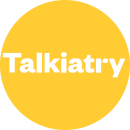You’ve seen the mugs and the memes. You may have experienced the frustration. This meeting should have been an email. This meeting could have been an aggregate of Slack statuses.
It’s easy enough to spot ineffective communication habits. In a 2017 survey of senior managers conducted by the Harvard Business Review, 62 percent of participants said that meetings miss opportunities to bring the team closer together. And a whopping 71 percent complained that meetings were unproductive and inefficient.
But how do you cultivate healthy communication habits? Which meetings find that 30 percent sweet spot — productive, efficient and cohesive? Add to this challenge a complicated and process-oriented profession that involves a lot of sustained individual effort and complicated team integration processes — along with a remote or hybrid work environment — and you have a task that might feel downright Sisyphian for engineering teams.
“Engineering can be very solitary, and there can be a danger in that isolation if team members are not connecting with others,” said Jared Hales, chief technology officer at e-commerce retailer Bespoke Post. Throughout his career, Hales has seen several avenues of communication atrophy, and he’s made a concerted effort to maximize the problem-solving efficacy of his meetings and keep his team in constant communication.
Built In NYC reached out to leaders from four engineering teams to find out how they create effective and communicative cultures. And a specific type of culture came up again and again.
Galileo is a startup and modern medical group leveraging its technology platform to provide digital, community and home-based care to individuals, employers and healthcare providers.
What’s one key communication habit you’ve developed and encouraged among your team?
I’m building an environment of trust that encourages my team to communicate openly with one another about their projects and tasks. When someone is stuck or needs help, others are often able to provide assistance because they know what’s going on with the other teams’ projects.
We have communication about a particular issue or project in a public communication channel so that we can increase the possibility that someone else can research about the topic or chime in if they know something about it. This has increased cross-team and intra-team collaboration.
Why is this an important habit to cultivate, and what effect has it had on team culture and the way your team works and collaborates?
Cultivating consistent public communication within and across teams means there is always an avenue for questions, feedback or concerns. It reduces siloed communications, provides visibility for other stakeholders and helps other team members understand what their colleagues are up to.
As a manager, I always make sure that I have one-on-one meetings with each member of the team once a week. I want them to feel like they’re part of the process and that they can come to me with any questions or concerns. The more open and transparent I am, the more comfortable people feel working with me.
Regular check-ins with the team have also helped the team work more collaboratively and volunteer to work more with each other, helping improve team dynamic and build camaraderie.
Cultivating consistent public communication within and across teams means there is always an avenue for questions, feedback or concerns.”
What advice do you have for other engineering managers who are looking to create healthy communication habits among their teams?
I think the most important thing is to get to know your team and understand how they communicate. It’s also important for me to understand how I communicate. One thing that has really helped me was the use of non-violent communication and working on creating a safe environment for the team.
By using non-violent communication, people can express how they’re feeling in a constructive way and work through things together instead of shutting down or avoiding conflict altogether. When you have a team that feels safe with each other, they are much more likely to be honest and upfront about their thoughts and feelings. This helps create an environment where people can thoughtfully disagree but still get along in a healthy way.

Cybersecurity company DataDome provides a SaaS product designed to protect customer websites from automated threats.
What’s one key communication habit you’ve developed and encouraged among your team?
Continuous feedback. The expected outcome for this communication habit should be a short feedback loop between you and your team, without being constrained by any process you have in place.
When someone from your team has an issue, you should be able to address it together quickly without waiting for your quarterly reviews or your one-on-one sessions. If you let it sit for too long, your actions might become irrelevant by the time you apply them, or it could generate frustration in your team.
Another benefit to this habit is a kind of proactive transparency that runs across your team. If team members feel comfortable enough with it, they will communicate more efficiently on what they are working on. When they encounter roadblocks, their teammates will be able to jump in and help them more quickly thanks to all the provided context. It will also push them to show the rest of the company what kind of impact they have overall, and I think people often underestimate how important this is for their own growth.
Why is this an important habit to cultivate, and what effect has it had on team culture and the way your team works and collaborates?
In order to execute this habit successfully, you will have to enforce other healthy habits first.
You need to build a safe work environment for your team. People should be able to trust their teammates and not feel threatened or ashamed when they make mistakes, ask for help or simply share their thoughts. Doing so will allow them to thrive and actually make it easier for you to give and get feedback.
You need to build a safe work environment for your team.”
What advice do you have for other engineering managers who are looking to create healthy communication habits among their teams?
Try to be available for your team. Do your best to be approachable and be proactive when you want to let them know you are there to help. As remote and hybrid work are more and more present, it’s even more crucial.
Don’t just tell your team members to message you whenever they need you. They might have their own idea of how busy you are and be afraid to interrupt you, so it’s your job to be observant and ask around when you think they could be stuck, overwhelmed by a situation or bothered by something. This goes a long way to make your relationships stronger within the team, and it should encourage team members to be there for their teammates too.

Bespoke Post is a multi-category e-commerce retailer and lifestyle brand that provides themed subscription boxes and offers exclusive and hard-to-find items made by small brands.
What’s one key communication habit you’ve developed and encouraged among your team?
It’s common for engineering teams to host a daily stand-up. However, at most places I’ve worked previously, it was easy for them to become a tedious thing where the team didn’t fully engage, as they tended to be formatted around everyone giving a status update.
At Bespoke Post, we do our updates asynchronously via Slack. A robot – courtesy of a Slack plug-in – asks each team member a question like “What you are working on?” and “What is blocking you?” and then shares the responses out into our team channel. Then when we do our daily stand-up, we skip the need for everyone to update on their status, as it’s already been shared out.
Why is this an important habit to cultivate, and what effect has it had on team culture and the way your team works and collaborates?
It allows us to instead use our daily stand-up time to address obstacles and collaboratively problem solve, changing the stand-up into a solutions-oriented meeting. It also invites all team members to participate and have their voices heard, as well as providing those facing obstacles the chance to get the team’s gut check on potential solutions. I find it really helps to unstick the team from problems a bit faster. And as a manager, it lets me identify if someone is encountering a problem that’s taking longer than usual to clear up so that I know when to jump in and problem solve.
You want to be able to let people work in ways that feel comfortable, but you need to nudge your team to work in many different ways.”
What advice do you have for other engineering managers who are looking to create healthy communication habits among their teams?
Engineering can be very solitary, and there can be a danger in that isolation if engineers are not connecting with others. Building a strong culture of communication is key.
As a manager, I want everyone to spend as much time in their comfort zone as possible. But at the same time, everyone needs to be well rounded and able to accommodate others’ comfort zones. You want to be able to let people work in ways that feel comfortable, but you need to nudge your team to work in many different ways. There’s a certain degree of reaching people in the middle.
Talkiatry is a digital health startup. The company’s practice model offers flexible telemedicine options and custom-built offices to psychiatrists and helps patients access in-network appointments for therapy and medicine management.
What’s one key communication habit you’ve developed and encouraged among your team?
We push back when teammates use “blame” language against themselves. Our teammates are always forgiving of each other. No one ever points a finger at someone else and says “you should have done better!” And when teammates do it to themselves, we remind each other that it’s just as important to be forgiving of ourselves.
Accountability is crucial for healthy teams, but we also have to remember when we made deliberate trade-offs, were working under different constraints or simply gained new information or experience. We encourage each other to look back on our decisions and ask: Do you believe you did the best job you could given what you knew at the time, your skills and abilities, the resources available and the situation at hand? If you truly believe you did, then there’s no reason to think you could have done better than the best job you could have done.
Why is this an important habit to cultivate, and what effect has it had on team culture and the way your team works and collaborates?
This matters for the psychological safety of the team. We know we aren’t perfect, and therefore it must be OK to make mistakes. It’s easy for us to accept that our teammates make mistakes. But we also have to accept that of ourselves, and we have to feel safe to ask our teammates to accept that of us.
Less obviously, but just as importantly, is noting that we are always working under constraints. No team ever has all the time, resources and knowledge they need to make perfect decisions with no trade-offs. We have to remember that we made a deliberate decision to accept those trade-offs. Remembering this gives us the safety to make hard choices instead of passing that responsibility — and that accountability — off to others. When we step up to make those choices and take on trade-offs, we shouldn’t punish ourselves for it.
We know we aren’t perfect, and therefore it must be OK to make mistakes.”
What advice do you have for other engineering managers who are looking to create healthy communication habits among their teams?
It feels a little meta, but nurturing healthy communication habits requires you to communicate with your team about working together toward this goal. And the way you communicate that will send the first signal to your team about what healthy communication might look like. Nudging the team in that direction without telling them you’re doing it or sharing why you’re doing it — or getting buy-in on the direction — isn’t very healthy. Engage your teammates openly as partners to create those healthy communication habits together.
The engineering manager’s role is not to dictate how the team works but to provide guidance and facilitate collaboration. Applying that mindset here means it’s important to know what’s not OK and to be clear and consistent about those principles. It’s also important to leave room within those constraints for the team to find the place they’re most comfortable. Be open to being surprised. Be open to changing over time. Let the team work together to figure out where you all feel healthy, collaborative and safe.












